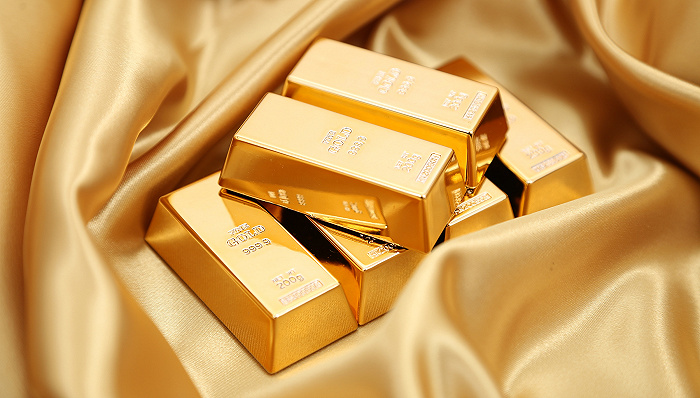Since the end of February, the price of gold has continued to rise. On March 7th, the spot gold price in London once rose to $2164.78 per ounce, breaking historical records; COMEX gold futures hit a historic high of $2172.2 per ounce.
The prospect of the Federal Reserve raising interest rates, continuous domestic geopolitical conflicts, high levels of global central bank’s willingness to buy gold, and the seasonal needs of Chinese and Indian consumers for gold are all driving sentiment in shopping malls. Many analysts believe that there is no hope for gold prices to remain at a high level in the future and may rise to $2300 per ounce in the second half of the year.

“The reasons for the rise in gold prices include inflation, the need for central banks to buy gold to rise, the trend towards dollarization in growing economies, economic and geopolitical factors, as well as investors’ expectations for the Federal Reserve’s interest rate hike in the second half of the year. The gold boom explains why investors believe that shopping malls or authorities themselves are experiencing some kind of structural instability.” David Wagner, manager of Aptus Capital Advisors’ mall and stock market, told The Wall Street Journal.
From March 7th to 8th Eastern Time, the President of the Federal Reserve Commission, Jerome Powell, attended hearings in both houses of Congress to introduce the country’s economic vision and monetary strategy to lawmakers. This is Powell’s last appearance before the Federal Reserve’s interest rate meeting on March 19th, with the support of Bemont Mall. He reiterated in his speech that the Federal Reserve will start raising interest rates later this year, but has not yet revealed the specific time.
The latest data from the Chicago Mercantile Exchange’s “Federal Reserve Inspection Target” shows that 76.2% of the Federal Reserve is likely to announce a rate hike at the June strategy rally. Under normal circumstances, gold prices will rise as interest rates rise, and the Fed’s rate hikes will become a catalyst for continuous gold price increases in the second half of the year.
From the perspective of the domestic situation, there are frequent geopolitical conflicts at present. On March 7th, Sweden officially joined the North Atlantic Convergence Structure (NATO), and Russia will strengthen its western offensive; There are still no signs of temporary Israeli Palestinian fire; The Husai armed forces mobilized missile strikes on a Red Sea merchant ship on Wednesday, resulting in the death of sailors for the first time. Geopolitical risks and frequent changes highlight the cost of gold hedging.
Another identity that supports gold prices is the need to buy gold from central banks in various countries. According to the “Global Gold Demand Trend Statement” issued by the National Gold Association, in 2023, the Global Central Bank continued to buy a large amount of gold, with a net purchase quality of 1037 tons throughout the year, only 45 tons less than the historical record of 2022. The data released by the People’s Bank of China on Thursday showed that in February, the central bank’s gold reserves increased by 390000 ounces month on month, for 16 consecutive months, setting a record for the longest consecutive period of central bank’s gold holdings in statistical data. During this period, the cumulative range of holdings reached 9.94 million ounces, equivalent to approximately 282 tons.
The mall also smelled the taste of the crisis in the American banking industry a year ago. Last Thursday, the New York Community Bank acknowledged significant shortcomings in internal control related to deposit inspections, resulting in a huge loss of $2.8 billion in the fourth quarter of previous years, causing stock prices to fall more than 20% for two consecutive days, reaching a new low since the 1990s. This has led shopping malls to worry about the hidden dangers of the US financial tail.
Investors and analysts generally believe that the future price of gold has a long-term foundation. Pete Grieve, an analyst at Money.com, and Kar Yong Ang, an analyst at OctaFX Mall, a foreign exchange broker, estimate that gold can reach $2300 per ounce in the second half of the year. If the central bank’s trend of buying gold continues to decline, it will reach $2500 next year.
But not everyone hopes for gold. For example, Patrick Farrell, Chief Investor of Charles Stanley, stated that gold prices can quickly reach their peak. “For many commodities, this has been a tough year. Large Asian economies’ economic growth and weakness have led to price increases in power, industrial metals, and commodities such as copper and nickel.”
Debon Securities reported that the price of gold has a long-term foundation. However, it is important to note that if the United States successfully replicates the “interest rate hike+soft landing” of 1995-1996 and explores new economic drivers under the artificial intelligence property reform, then the gold price may experience consolidation.
Pete Grieve stated that whether gold can be classified as an investment attraction depends on individual investment preferences and fiscal objectives, and the financial staff advocates against investing 5-10% more capital in gold. If inflation data is high or unemployment data is hot, gold prices can rise. The US Department of Labor will issue a February non farm payroll complaint on Friday evening. The shopping mall estimates that the rate of job vacancies may slow down, but overall, the labor market still has strong resilience.
